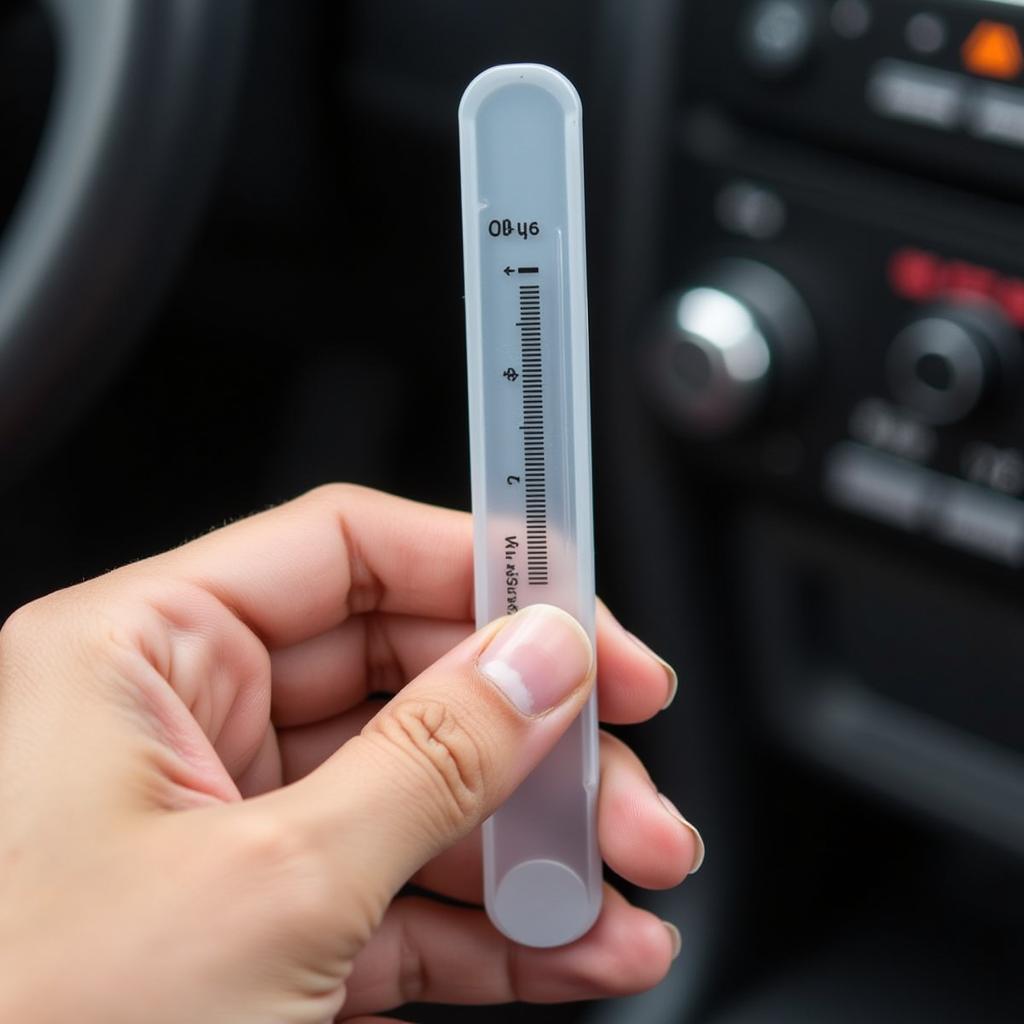Oil leaks are a common car problem that can range from a minor annoyance to a major engine issue. Knowing How To Fix An Oil Leak In Your Car can save you money and prevent further damage. This guide will walk you through the process of identifying, diagnosing, and potentially fixing an oil leak yourself.
If you’re unsure about tackling this repair yourself, consider consulting a professional mechanic. However, for the DIY enthusiast, understanding the basics can be empowering and cost-effective. Remember, addressing an oil leak promptly is crucial for maintaining your car’s health. Dealing with car trouble can be stressful, so why not check out fixes for bad idling car?
 Oil Leak Under Car
Oil Leak Under Car
Identifying the Source of the Leak
The first step in fixing an oil leak is pinpointing its origin. Start by parking your car on a clean, dry surface. After a few hours, check for oil spots underneath. The location of the stain can provide clues about the source of the leak. A leak towards the front could indicate a problem with the oil pan, timing cover, or front crankshaft seal. A leak towards the rear could suggest issues with the rear main seal or oil pan gasket.
Using Cardboard or Paper to Pinpoint the Leak
A simple trick is to place a large piece of cardboard or paper under your car after parking it. This will help you pinpoint the leak location more accurately. Examine the oil stain pattern on the cardboard. This will give you a more precise idea of where the leak is originating. Don’t forget to dispose of the cardboard responsibly.
 Checking Oil Level with Dipstick
Checking Oil Level with Dipstick
Common Causes of Oil Leaks
Several components can cause oil leaks. Some of the most common culprits include:
- Oil Pan Gasket: The gasket between the oil pan and the engine block can deteriorate over time, leading to leaks.
- Valve Cover Gasket: The valve cover gasket seals the top of the engine, and leaks here are relatively common.
- Crankshaft Seals: These seals prevent oil from leaking around the crankshaft. Front and rear seals can both fail.
- Oil Filter: An improperly installed or damaged oil filter can cause leaks.
- Timing Cover Gasket: This gasket seals the timing chain or belt cover and can leak if damaged or deteriorated.
How to Fix Common Oil Leaks
Fixing an oil leak often involves replacing the faulty gasket or seal. Here’s a general overview:
- Gather your tools: You’ll need wrenches, sockets, screwdrivers, a new gasket or seal, and an oil catch pan.
- Drain the oil: Drain the old oil into a catch pan before removing the component causing the leak.
- Remove the component: Carefully remove the component (oil pan, valve cover, etc.) to access the gasket or seal.
- Clean the surfaces: Thoroughly clean the mating surfaces where the gasket or seal sits.
- Install the new gasket/seal: Install the new gasket or seal, ensuring it’s properly seated.
- Reassemble the component: Reinstall the component and tighten the bolts to the correct torque specification.
- Refill the oil: Refill the engine with the correct type and amount of oil.
- Check for leaks: Start the engine and check for any remaining leaks.
It might be helpful to research car pistons firing unevenly cost to fix if you are experiencing other engine problems.
When to Consult a Professional
While some oil leaks are simple DIY fixes, others require specialized tools and expertise. If you’re uncomfortable working on your car’s engine, or if the leak is complex, it’s best to consult a professional mechanic. Don’t hesitate to ask who can fix car windows if you encounter additional car issues.
“A small oil leak can quickly become a big problem if ignored,” says automotive expert, John Miller. “Addressing it early can save you from costly repairs down the line.”
Conclusion
Knowing how to fix an oil leak in your car is a valuable skill for any car owner. By following this guide, you can identify the source of the leak and determine the best course of action. Remember, regular maintenance and prompt attention to oil leaks are crucial for keeping your car running smoothly. Cars in Fixa are well maintained, indicating the importance of addressing issues promptly.
“Preventing oil leaks is often easier than fixing them,” adds Sarah Thompson, a certified mechanic. “Regular oil changes and inspections can help identify potential problems before they turn into leaks.”
For further assistance or if you are not comfortable doing the repair yourself, please connect with AutoTipPro at +1 (641) 206-8880 or visit our office at 500 N St Mary’s St, San Antonio, TX 78205, United States.
 Mechanic Inspecting Engine
Mechanic Inspecting Engine
A man fixing a car can be a rewarding experience.
FAQ
- What is the most common cause of oil leaks? Worn-out gaskets and seals are the most frequent culprits.
- How much does it cost to fix an oil leak? The cost varies depending on the source and severity of the leak.
- Can I drive my car with an oil leak? Driving with a significant oil leak can damage your engine. It’s best to address the leak promptly.
- How can I prevent oil leaks? Regular oil changes and using the correct type of oil can help prevent leaks.
- What does engine oil do? Engine oil lubricates the engine’s moving parts, reducing friction and heat.
- What color is engine oil? New engine oil is typically amber or golden brown, while old oil is darker and thicker.
- How often should I check my oil level? It’s recommended to check your oil level at least once a month.





Leave a Reply